Urbanization
Globalization
Climate Change
What do they do? The First is give your City a Chief Resilience officer (I’m guessing the nonsense that produces the disasters goes in here).
Overview
In 2013, The Rockefeller Foundation pioneered 100 Resilient Cities to help more cities build resilience to the physical, social, and economic challenges that are a growing part of the 21st century. Cities in the 100RC network have been provided with the resources necessary to develop a roadmap to resilience along four main pathways:
Financial and logistical guidance for establishing an innovative new position in city government, a Chief Resilience Officer, who will lead the city’s resilience efforts;
Expert support for the development of a robust Resilience Strategy;
Access to solutions, service providers, and partners from the private, public and NGO sectors who can help them develop and implement their Resilience Strategies; and
Membership of a global network of member cities who can learn from and help each other.
To date, more than 1,000 cities have applied, and 100 cities have been selected, to join the Network—representing more than one-fifth of the world’s urban population. Currently, more than 50 holistic Resilience Strategies have been created, which have outlined over 1,800 concrete actions and initiatives. This has resulted in more than 150 collaborations between partners and cities to address city challenges, including $230 million of pledged support from platform partners and more than $655 million leveraged from national, philanthropic, and private sources to implement resilience projects.
After more than six successful years of growing and catalyzing the urban resilience movement, the existing 100 Resilient Cities organization concludes on July 31, 2019. On July 8, 2019, The Rockefeller Foundation announced an $8 million commitment to continue supporting the work of Chief Resilience Officers and member cities within the 100RC Network. This new funding will enable a new project to continue supporting the implementation of resilience initiatives incubated through the work of 100RC.
WHAT ABOUT LOS ANGELES.
Los Angeles’ Resilience Journey
Los Angeles is one of the most complex megacities of the world, with a population, geography, infrastructure, and economy comparable to those of states and nations. While the city limits cover 469 square miles, Greater Los Angeles is 10 times that size – a region of individual neighborhoods that comprise many different languages, cultures, and ethnicities.
The city’s central question is how a city of LA’s size and scope can truly be sustainable and resilient in a changing and increasingly globalized world, particularly in the face of water shortages and seismic challenges.
Aaron Gross
Chief Resilience Officer
Here is the 91 page plan by the Chief Resilience Officer.
“When we talk about vulnerable popula - tions and neighborhoods throughout this document, we want to be clear about not projecting a victimhood label on any Angeleno or neighborhood. The diversity of our neighbors and neighborhoods is a source of pride for our city as we continue to strive for additional inclusion and participation from everyone.
However, it is important to acknowledge the inequities and disparities that more advantaged Angelenos and affluent neighborhoods do not face, including historical and systemic discrimination, exclusion, marginalization, exploitation, underrepresentation, and dis - investment.
Nothing about an individual’s race, ethnicity, gender identity, sexual orientation, age, social class, physical ability or attributes, religious or ethical values system, national origin, immigrant status, linguistic ability, or ZIP code makes them inherently vulnerable.
We see acknowledging vulnerability as an assess - ment of the system’s deficiencies, rather than as a judgment of any Angeleno or neighborhood. And while Resilient Los Angeles is for every Angeleno, the actions we take to make Los Angeles safer and stronger will prioritize identifying and addressing our greatest vulnerabilities.”
How about Fire Prevention?
NOPE not there.
infrastructure for Reducing Flooding- Nope not there.
Deepening Storage capacity: aka putting in LITHIUM BOMBS TO GO OFF ALL OVER THE CITY IN THE EVENT OF A FIRE.
PREPARE FOR DISASTER - NO mention of fire prevention.
Resilience by Design (December 2014)
Mayor Garcetti releases Resilience by Design to address Los Angeles’ greatest earthquake vulnerabilities, including seismic retrofits for buildings and steps to secure our water supply and communications infrastructure. The report presents the recommendations of the Mayoral Seismic Safety Task Force and suggests strategic solutions to protect the lives of our residents; improve the capacity of the City to respond to earthquakes; prepare the City to recover quickly from earthquakes; and protect the economy of Los Angeles and the rest of Southern California.
Comprehensive Homeless Strategy (January 2016) The most comprehensive homelessness strategy in City history, the report marks a milestone in the transformation of how Los Angeles addresses homelessness through a regional approach. This report outlines recommendations to address homelessness over the next 10 years and serves as a blueprint in the prioritization and allocation of homelessness funding.
Sustainable City pLAn (April 2015) The Sustainable City pLAn sets the course for a cleaner environment and a stronger economy, with a commitment to equity as its foundation. The pLAn is made up of short-term targets (by 2017) and long-term targets (by 2025 and 2035) across 14 categories that will advance our environment, economy, and equity.
Vision Zero (August 2015) The Mayor launches Vision Zero, calling for City departments to pursue a goal of eliminating traffic-related deaths by 2025. In adopting this goal, Los Angeles joins a growing coalition of U.S. cities committed to eliminating traffic deaths while increasing safe, healthy, and equitable mobility for all.
LA River Ecosystem Restoration Project (June 2016) Building on more than a decade of river revitalization planning, the Los Angeles City Council adopts the L.A. River Ecosystem Restoration Project Feasibility Study. The project restores 11 miles of the river starting near Griffith Park to Downtown Los Angeles while maintaining existing levels of flood-risk management.
San Pedro Bay Ports Clean Air Action Plan Update (November 2017) The Clean Air Action Plan Update sets the course for eliminating harmful air emissions from port-related sources. The 2017 update builds on the clean air achievements of the 2006 plan and sets out measures to reduce greenhouse gases from port-related sources to 40% below 1990 levels by 2030 and 80% below 1990 levels by 2050.
Resilient Los Angeles (March 2018) Mayor Garcetti’s Resilient Los Angeles is a strategy to build the city’s resilience through leadership and engagement, disaster preparedness and recovery, economic security, climate adaptation, and infrastructure modernization. The strategy is a call to action for all Angelenos to contribute to the city’s resilience at every scale— from individual homes and neighborhoods to City leadership and beyond.
Plan for a Healthy Los Angeles (April 2015) The Plan for a Healthy Los Angeles elevates health as a priority for L.A.’s future growth and development, establishing a policy framework to make Los Angeles a healthier place to live, work, and play
GOAL 1: Educate and engage Angelenos around risk reduction and preparedness so they can be self-sufficient for at least seven to 14 days after a major shock
GOAL 2: Develop additional pathways to employment and the delivery of financial literacy tools to support our most vulnerable Angelenos
GOAL 3: Cultivate leadership, stewardship, and equity with young Angelenos
***
“REDUCE WILDFIRE RISK THROUGH BRUSH CLEARANCE The Los Angeles Fire Department (LAFD) works year-round with Angelenos to ensure hillside vegetation within 200 feet of any structure/building located within the Very High Fire Hazard Severity Zone is cleared. Brush clearance requirements and the inspection process for properties within this zone are provided by LAFD at local fire stations and online”
https://resilientcitiesnetwork.org/downloadable_resources/Network/Los-Angeles-Resilience-Strategy-English.pdf
Are you going to search if your city is a non-resilient RESILIENT CITY?



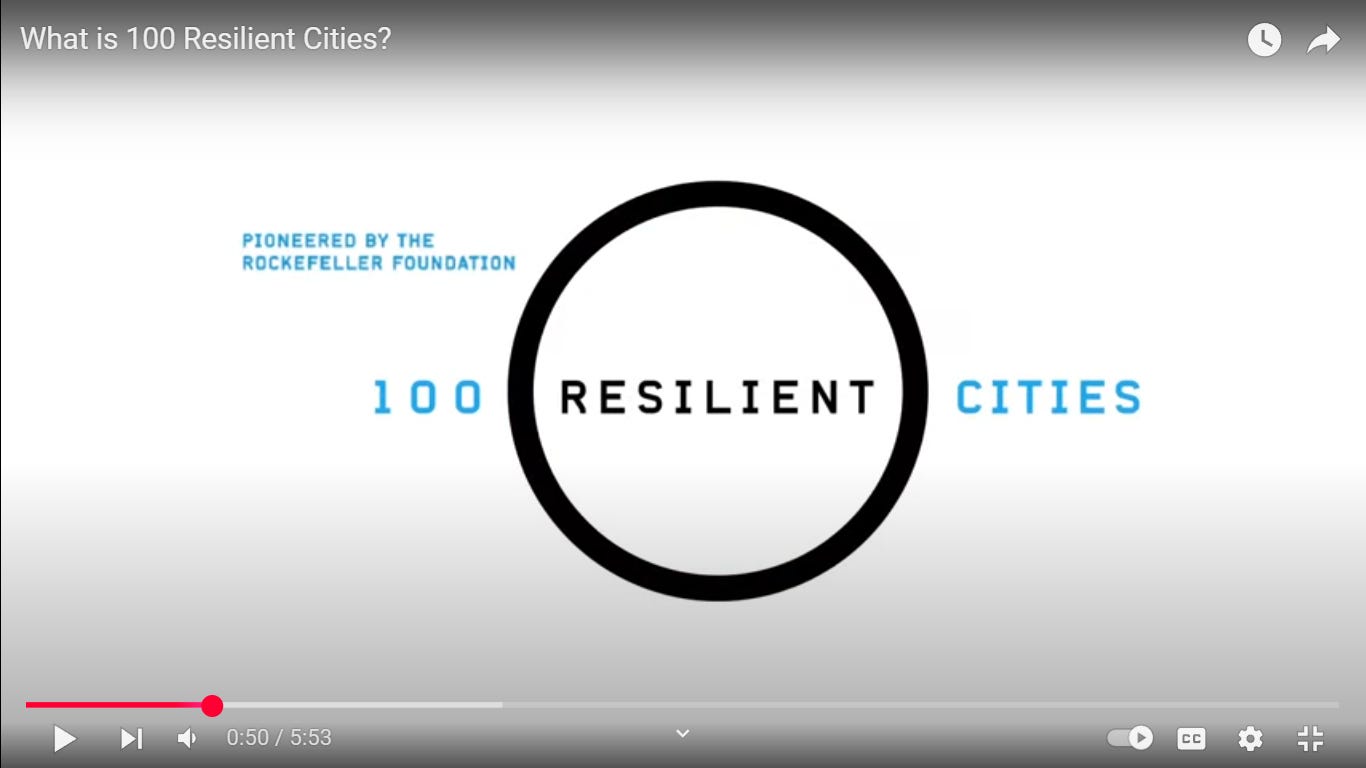
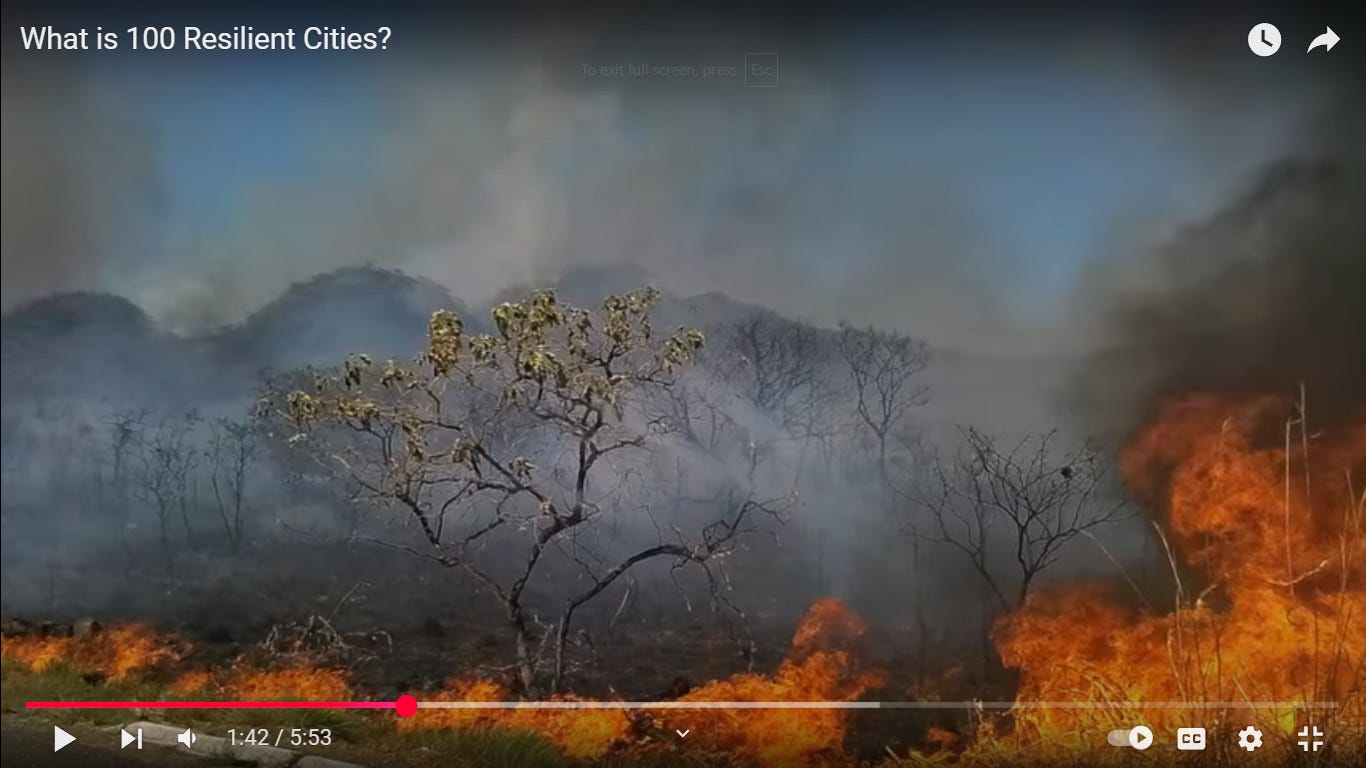
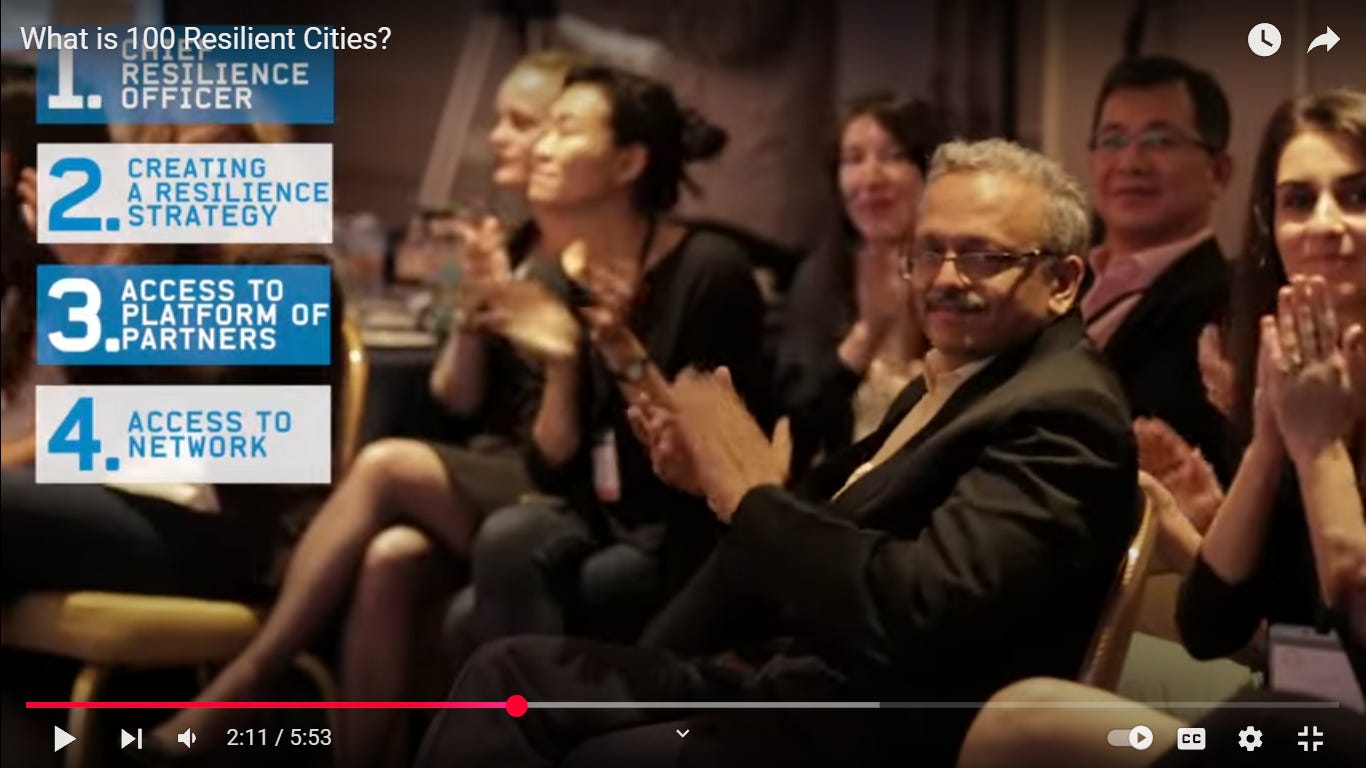

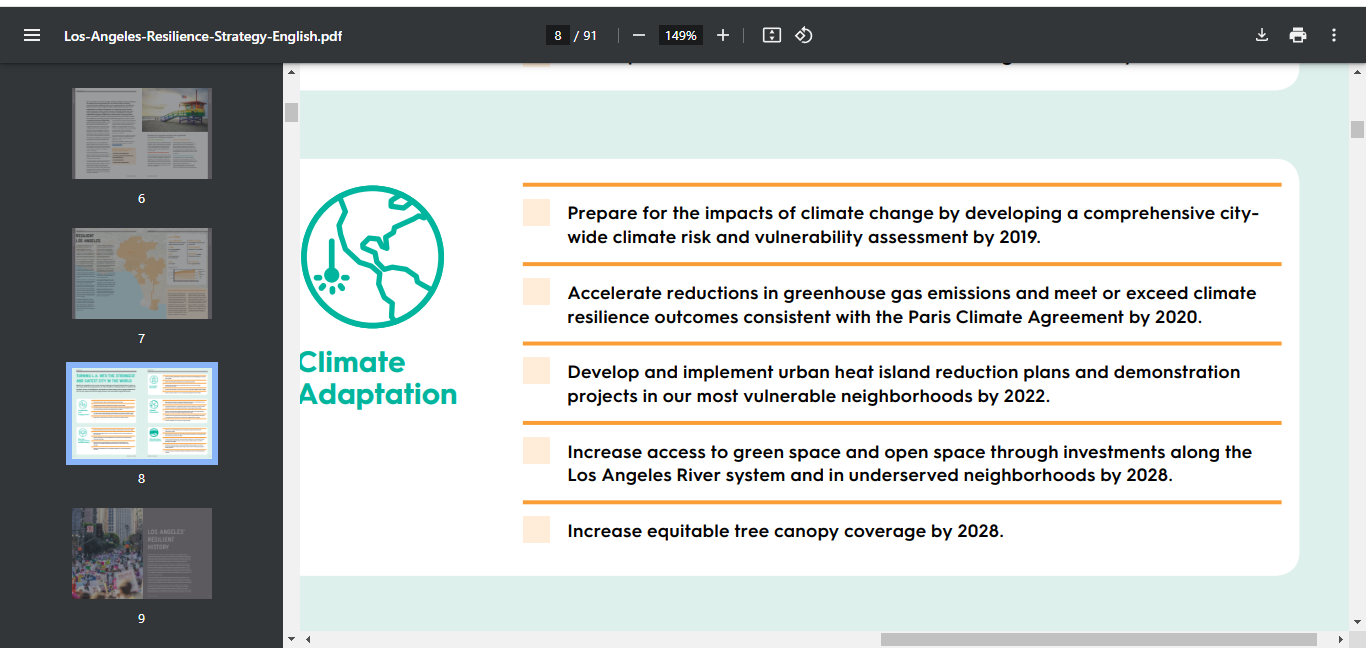
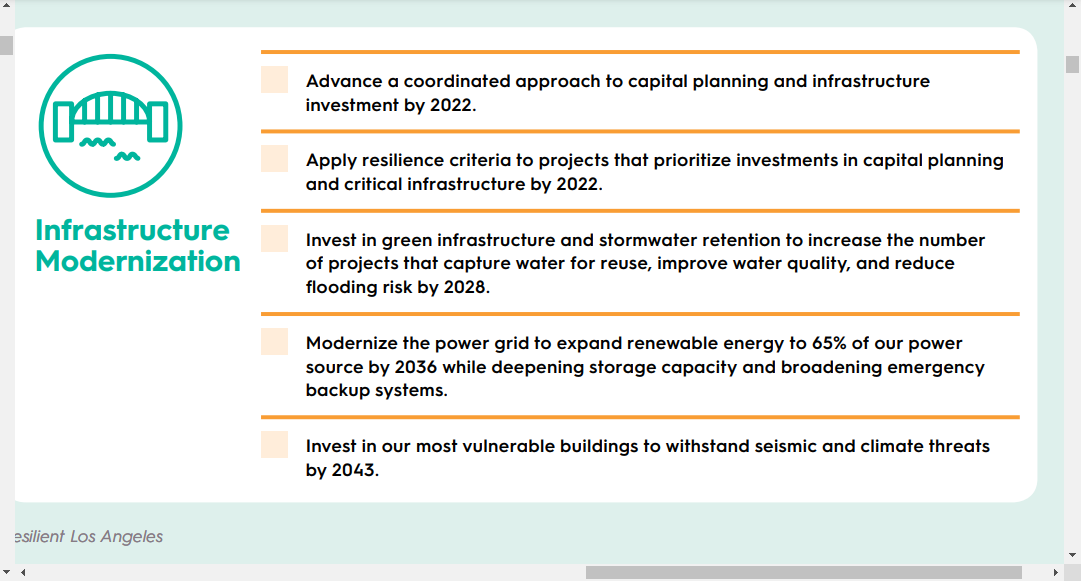
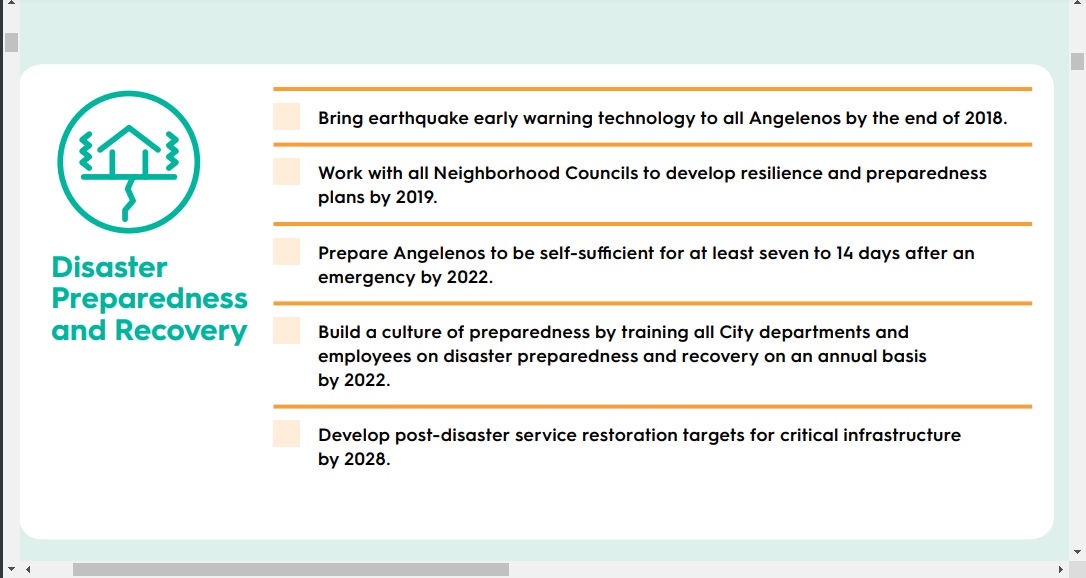
"......representing more than one-fifth of the world’s urban population."
I am sure this is just a coincidence but I believe the WEF plan is to murder the world down to about 20% of current population. Acc to my math, that leaves 1/5 of the most compliant population, living as slaves to TPTB and getting UBI checks to stop them from the deserved 1789 rebuttal. We all better pray we get them before they deal with us.
The now demolished GA guidestones says 500M left when world population was 3.7 B, almost 80% cull.
Resilient is just one term to conflate the issue. You see the International Council for Local Environmental Initiatives has been inside virtually every town in the United States since the early 2000's. ICLEI'S developed out of The American Planning Association’s gear box steering us with sample Codes & Statutes for each. A couple years later it was noticed how similar the "Planning Manuals" for cities around the world had become. Not considering each and every towns specific specialities, resources or demographics. Just a suspected "Easy Way" / CONVENIENT method for city planners to adapt? My questions concerning ICLEI'S and all Maryland State Representatives back in 2007/2008 was met with remarkable surprise and disdain. Even the Republican Candidate for Governor said he had not ever heard of the term 🙄